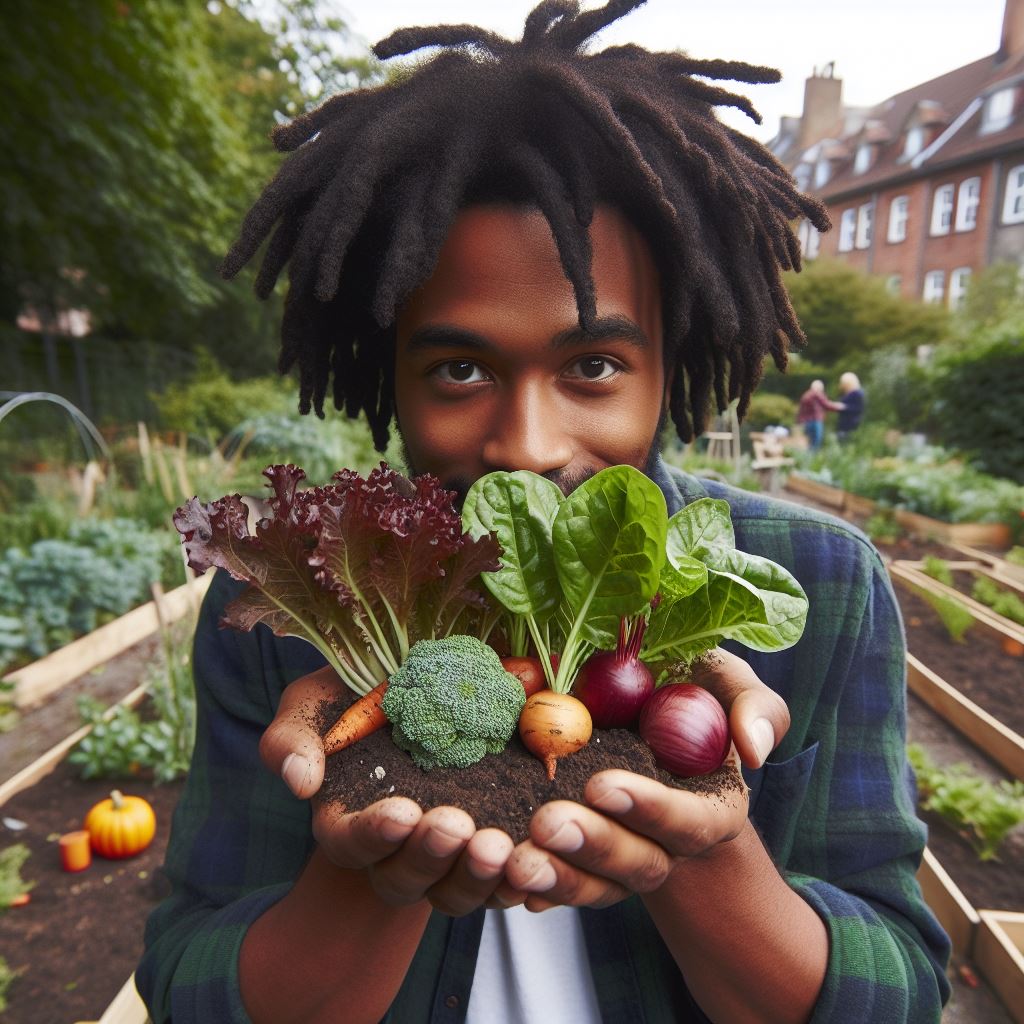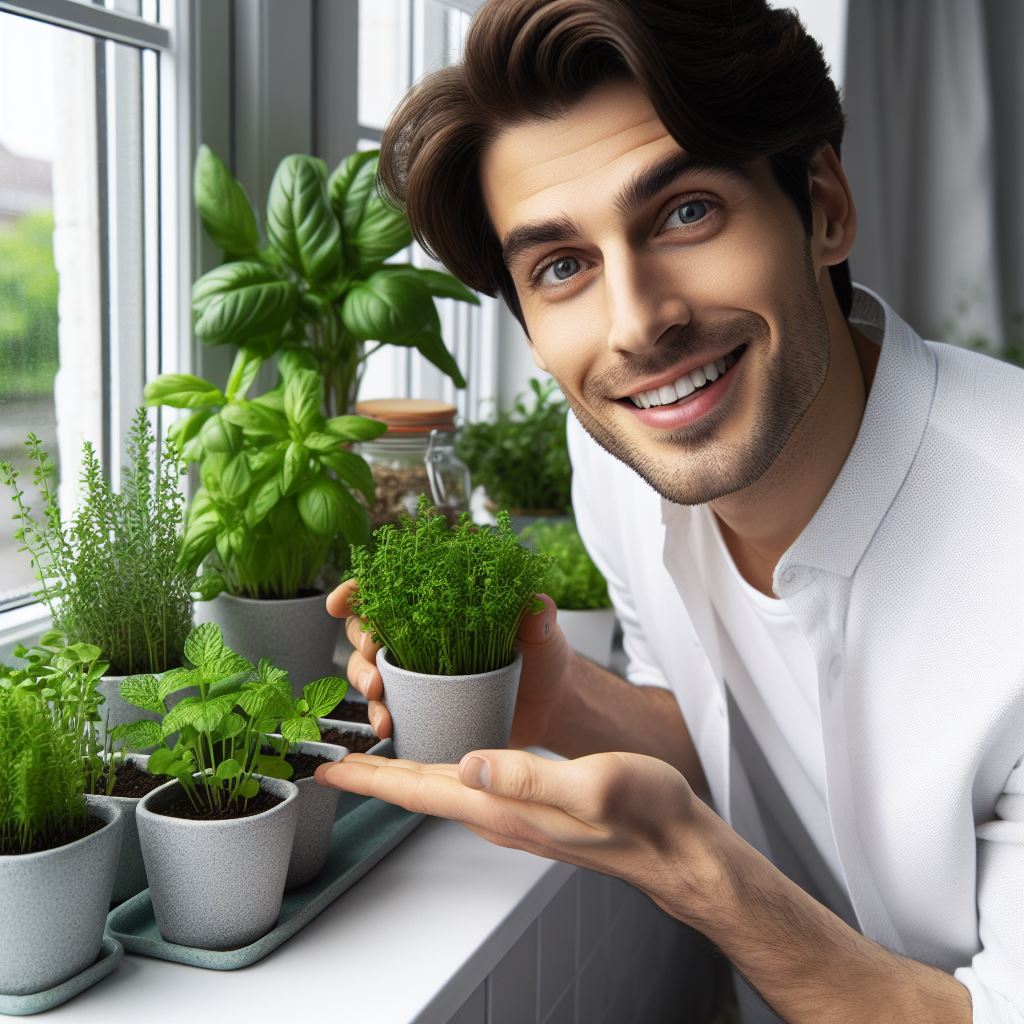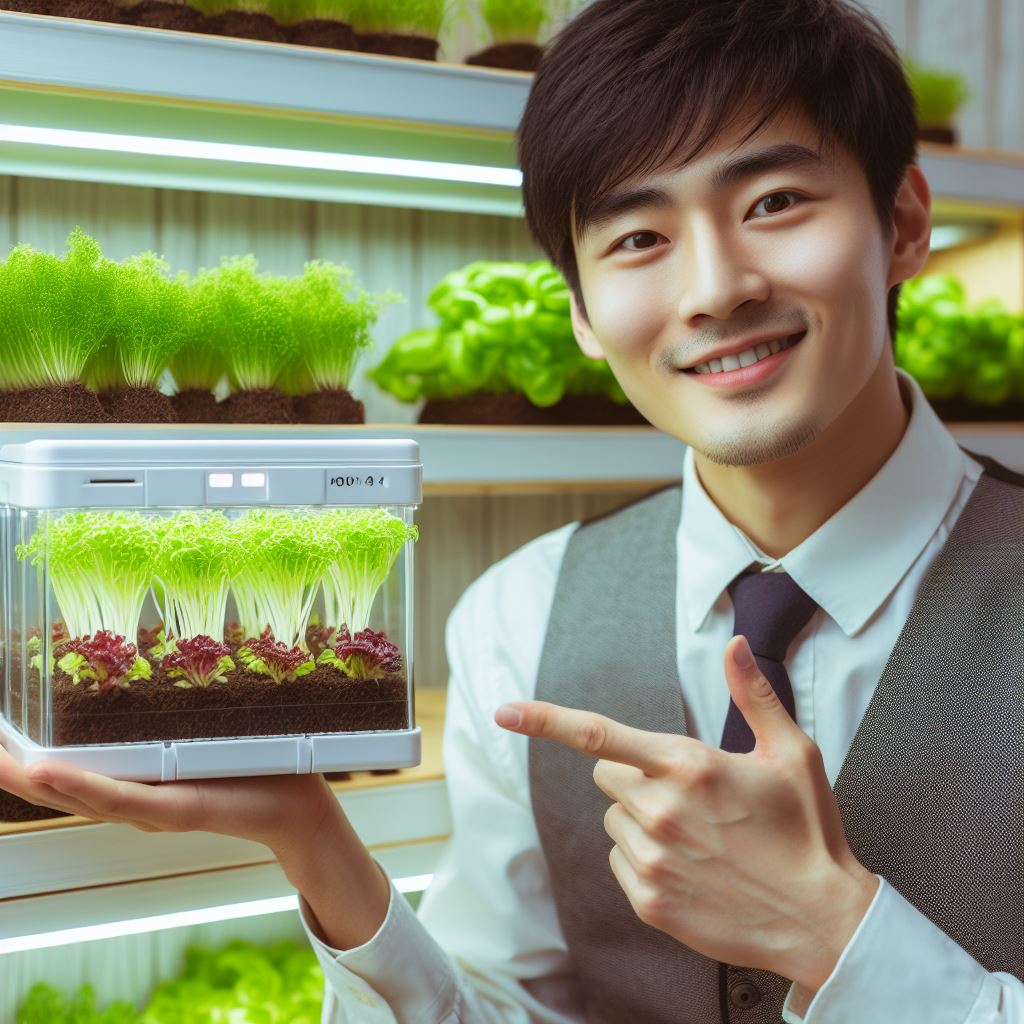Introduction
Urban veggie gardens offer numerous benefits, making them increasingly popular in densely populated areas.
Importance of urban veggie gardens
- Provide access to fresh, nutritious produce.
- Promote sustainability and self-sufficiency.
- Enhance community engagement and green spaces.
Benefits of growing vegetables in small spaces
- Maximizes limited urban areas for food production.
- Reduces transportation emissions associated with store-bought produce.
- Encourages creativity and innovation in gardening techniques.
Urban veggie gardens not only contribute to healthier lifestyles but also foster a sense of community and environmental responsibility.
Choosing the right location
Assessing available space
Choosing the right location for your urban veggie garden is crucial to ensure a successful and bountiful harvest.
Assessing the available space is the first step to determine how much room you have for your garden.
Take accurate measurements of the area and consider vertical gardening options, which can maximize space utilization even in small areas.
It is also important to be aware of any restrictions or regulations imposed by your local community or landlord.
In addition to evaluating the available space, there are certain factors that need to be considered when choosing the right location.
One of the most important factors is sunlight. Vegetables typically require at least 6 hours of direct sunlight daily for optimal growth.
Observe the amount of sunlight your chosen location receives throughout the day to ensure it meets this requirement.
Avoid areas heavily shaded by nearby structures or trees that may obstruct sunlight.
Factors to consider (sunlight, water access, etc.)
Another crucial factor is water access. Your veggie garden should have easy access to a water source for regular watering.
Consider the proximity of the chosen location to a convenient water source, as this will save you time and effort.
Adequate water supply is essential for the health and productivity of your plants.
It is also important to assess the soil quality in your chosen location.
Perform a soil test to determine if any amendments or improvements are necessary.
Transform Your Agribusiness
Unlock your farm's potential with expert advice tailored to your needs. Get actionable steps that drive real results.
Get StartedVegetables thrive in well-draining soil enriched with organic matter.
Consider adding compost or other organic amendments to enhance the fertility and structure of the soil.
Lastly, ensure that your chosen location is free from potential hazards or obstructions that may hinder your gardening efforts.
Clear the area of any debris, rocks, or other objects that may interfere with planting or maintenance tasks.
Ensure that the space is safe and accessible for regular care and harvesting.
By carefully assessing the available space and considering factors such as sunlight and water access, you can choose the perfect location for your urban veggie garden.
This will provide optimal growing conditions and maximize the yield of your garden, even in small spaces.
Happy gardening!
Read: Kitchen Garden: Hydroponics for Beginners
Selecting suitable vegetables
Choosing plants that thrive in containers
When it comes to urban veggie gardens in small spaces, selecting the right vegetables is crucial.
Not all plants are suitable for containers, so it’s important to choose wisely.
- Tomatoes – Consider growing dwarf or patio tomato varieties that are specifically bred for container gardening. They have a compact growth habit and produce abundant fruit.
- Peppers – Bell peppers and varieties like chili peppers are excellent choices for container gardening. Look for compact varieties that don’t require a lot of space to grow.
- Cucumbers – Some varieties of cucumbers can be trained to grow vertically, making them perfect for small spaces. Look for bush or compact varieties that produce high yields.
- Beans – Both bush beans and pole beans can be grown in containers. They are fast-growing and have a high yield, making them ideal for small gardens.
Optimal vegetables for small spaces (e.g., salad greens, herbs)
In addition to the vegetables mentioned above, there are other optimal choices for small urban veggie gardens.
These plants not only grow well in containers but also provide big yields.
- Salad greens – Lettuce, spinach, arugula, and other leafy greens are perfect for container gardening. They have shallow roots and can be harvested multiple times.
- Herbs – Herbs like basil, thyme, rosemary, and mint are well-suited for small spaces. Not only do they add flavor to your meals, but they also grow well in pots.
- Radishes – Radishes are fast-growing vegetables that can be harvested within a month. They don’t require much space and can be grown in containers or small raised beds.
- Strawberries – If you have a sunny balcony or patio, consider growing strawberries in containers. They are compact plants that produce sweet and juicy fruits.
- Swiss chard – This leafy green vegetable is not only nutritious but also visually pleasing. Swiss chard can be grown in containers and provides a continuous harvest.
- Microgreens – These immature greens are packed with nutrients and can be grown on your windowsill. They are harvested when the first true leaves appear, usually within a couple of weeks.
- Carrots – Although carrots require deeper containers, they can still be grown in small spaces. Look for varieties that are specifically bred for container gardening.
- Peas – Peas can be grown in containers with trellises or stakes for support. They are fast-growing and can be harvested when the pods are plump and full.
Therefore, selecting suitable vegetables for urban veggie gardens in small spaces is essential for achieving big yields.
Choose plants that thrive in containers and opt for optimal vegetables like salad greens, herbs, and compact varieties.
With proper care and maintenance, you can enjoy a bountiful harvest even in limited gardening spaces.
Read: Balcony Fruit Farming: Tips for Tiny Areas
Preparing the soil
Container gardening basics
- Choose containers that are appropriate for the size of the plants you want to grow.
- Ensure that the containers have proper drainage holes to prevent waterlogging.
- Use high-quality potting soil specifically made for container gardening.
- Fill the containers with soil, leaving some space at the top for watering.
- Select plants that are suitable for container gardening, such as herbs or compact vegetables.
- Make sure the containers receive adequate sunlight throughout the day.
Soil selection and quality
- Test the soil pH and nutrient levels before planting to determine its suitability for vegetables.
- Most vegetables prefer a slightly acidic soil with a pH level of around 6 to 6.8.
- Improve poor quality soil by adding organic matter, such as compost or well-rotted manure.
- Organic matter helps to retain moisture in the soil and provides essential nutrients for plant growth.
- Avoid using chemically treated or contaminated soil, as it can harm both plants and human health.
- Regularly monitor soil moisture levels and adjust watering accordingly to prevent over or under-watering.
Mulching techniques
- Apply mulch to the soil surface after planting to conserve moisture and prevent weed growth.
- Use organic mulch materials, such as straw, dried leaves, or wood chips, in a layer around 2-3 inches thick.
- Mulch helps to regulate soil temperature, keeping it cool during hot weather and warm during colder periods.
- It also acts as a barrier, preventing direct contact between the soil and plant leaves, minimizing disease transmission.
- Refresh the mulch layer periodically to maintain its effectiveness and appearance.
- Be cautious not to over-mulch, as excessive mulch can create a damp environment that promotes fungal diseases.
By following these steps, you can successfully prepare the soil for your urban veggie garden.
Container gardening provides an excellent option for those with limited space, allowing you to grow a variety of vegetables in small areas like balconies, rooftops, or even windowsills.
Container gardening basics are crucial as they ensure that your plants have the right growing conditions.
Selecting the appropriate containers and potting soil is essential for the overall health and productivity of your vegetable plants.
Soil selection and quality play a significant role in the success of your urban veggie garden.
Testing the soil and making necessary amendments ensure that your plants receive the necessary nutrients for optimal growth.
Adding organic matter improves soil structure, drainage, and fertility.
Showcase Your Farming Business
Publish your professional farming services profile on our blog for a one-time fee of $200 and reach a dedicated audience of farmers and agribusiness owners.
Publish Your ProfileMulching is a beneficial technique that helps retain moisture, reduces weed competition, and maintains a more consistent soil temperature.
Organic mulch materials also contribute to the overall health of the soil as they break down over time, enriching it with additional organic matter.
Remember to regularly monitor your soil moisture levels and adjust your watering schedule accordingly.
Over-watering can lead to root rot, while under-watering can cause stress and negatively impact the yield.
Additionally, be mindful of the sunlight requirements of your plants and ensure they receive enough light throughout the day.
By implementing these soil preparation techniques, you can maximize the yields of your urban veggie garden.
With proper care and attention, small spaces can produce bountiful harvests of fresh and nutritious vegetables, bringing the joys of gardening into urban living.
Read: Eco-Friendly Farming: Aquaponics Insights

Setting up container gardens
Types of containers
Choosing the right type of container for your urban veggie garden is crucial.
Not only do you want something that suits your space and style, but you also need to consider the needs of your plants.
Here are some popular container options that will help you grow big yields in small spaces.
Classic terra cotta pots
Classic terra cotta pots are a timeless choice.
They not only look elegant but also provide excellent drainage for your plants.
Additionally, their porous material allows air to reach the roots, promoting healthy growth.
Remember to clean and disinfect them before planting to avoid any potential diseases.
Fabric grow bags
Fabric grow bags are another fantastic option, particularly for vegetables with deep root systems.
These bags are lightweight, portable, and breathable, providing good airflow to the roots.
Plus, they can be folded and stored easily when not in use. Just make sure to choose ones with sturdy handles for effortless movement.
Hanging baskets
Hanging baskets are a great choice for those with limited horizontal space.
They can be suspended from hooks, railings, or even overhead structures, maximizing your garden space.
Be mindful of their weight when filled with soil and water, and ensure proper support to prevent accidents.
Window boxes
Window boxes are perfect for urban dwellers with sunny windowsills.
These slim containers can be easily mounted outside your windows, allowing you to grow herbs, lettuce, or small veggies right where you cook.
Just make sure they have adequate drainage and receive enough sunlight throughout the day.
Recycled containers like buckets, bins, and even old tires
Thinking outside the box, recycled containers can be a budget-friendly and eco-conscious alternative.
From old buckets and bins to even repurposed tires, you can transform everyday objects into charming planters.
Just ensure proper drainage by drilling holes in the bottom and use non-toxic materials.
Proper drainage and ventilation
Proper drainage is essential for container gardens to prevent waterlogged soil and root rot.
Most containers come with drainage holes already in place, but if not, make sure to create them.
Elevating your containers on bricks or pot feet can also enhance drainage.
Ventilation is equally important to provide sufficient airflow to your plants’ roots.
This can be achieved by using containers with porous materials, like terra cotta, or adding air holes along the sides of plastic containers.
Good ventilation helps prevent the buildup of excess moisture, which can lead to fungal diseases.
Vertical gardening options
Vertical gardening is a game-changer for urban veggie gardeners looking to maximize limited space.
It involves growing plants vertically, either by using trellises, fences, or specially designed vertical garden systems.
Here are some options to consider:
- Trellises: These are perfect for climbing vegetables like tomatoes, cucumbers, and beans. Attach trellises securely to a wall or fence and train your plants to grow vertically, saving valuable ground space.
- Fences: Utilizing your existing fence as a vertical gardening space is a clever way to add more plants. Hang planter bags, attach containers or grow vines along the fence to increase your planting area.
- Vertical garden systems: There are various options available, such as modular wall-mounted planters or freestanding tower gardens. These systems allow you to grow multiple plants in a small footprint, making them ideal for balconies or patios.
By exploring vertical gardening, you can increase your yield while adding visual interest to your urban veggie garden.
Just make sure to select appropriate plants for vertical growth and provide necessary support to keep everything sturdy.
In fact, setting up container gardens for urban veggie gardening is both fun and rewarding.
Choose the right containers, ensure proper drainage and ventilation, and consider implementing vertical gardening techniques.
Showcase Your Farming Business
Publish your professional farming services profile on our blog for a one-time fee of $200 and reach a dedicated audience of farmers and agribusiness owners.
Publish Your ProfileWith these tips, you can transform your small space into a bountiful garden, yielding fresh produce for your delight.
Read: Indoor Eden: Hydroponic Systems for Home
Planting and Maintenance Tips
Seed Planting vs. Transplanting
- Consider the space available in your urban veggie garden before deciding between seed planting and transplanting.
- Seeds are more cost-effective and offer a wider variety of plant options.
- Transplanting allows for faster growth and earlier harvest, especially for vegetables with longer growing seasons.
- When transplanting, make sure to handle the plants carefully to avoid damaging roots.
Watering and Fertilizing Schedules
- Regular watering is crucial for the health and productivity of your urban veggie garden.
- Monitor the moisture levels in the soil and water accordingly, ensuring that it is consistently moist but not waterlogged.
- Use organic fertilizers or compost to provide essential nutrients to your plants.
- Follow a schedule for fertilizing, keeping in mind that different vegetables have varying nutrient requirements.
Pest Control Measures
- Implement preventive measures, such as using companion planting and proper spacing, to deter pests from your garden.
- Regularly inspect your plants for signs of pest infestation, such as chewed leaves or wilting.
- If pests are identified, consider organic solutions like insecticidal soaps or neem oil to minimize harm to beneficial insects.
- Encourage natural predators, such as ladybugs or birds, to help control pests in your urban veggie garden.
Pruning and Harvesting Techniques
- Pruning helps maintain the shape and size of your plants, promoting better air circulation and reducing the risk of diseases.
- Remove dead or diseased leaves regularly to prevent the spread of infections.
- Harvest vegetables when they reach peak ripeness to ensure the best flavor and texture.
- Use proper tools and techniques when harvesting to minimize damage to the plants.
Taking care of an urban veggie garden requires proper planning, attention to detail, and consistent maintenance.
Whether you choose to grow from seeds or transplant, ensure that the plants receive adequate water and nutrients.
Implement pest control measures and regularly inspect your plants for any signs of infestations.
Pruning and harvesting should be done correctly to promote healthy growth and optimum produce quality.
With these planting and maintenance tips, your small space can yield big results in terms of a thriving veggie garden.
Maximizing yields in small spaces
Companion planting strategies
Companion planting is an effective strategy for maximizing yields in small urban veggie gardens.
By pairing compatible plants, you can create a mutually beneficial environment that encourages growth and discourages pests.
- Plant herbs near vegetables: Herbs such as basil, parsley, and mint can deter pests and improve the flavor of neighboring vegetables.
- Mix flowers with vegetables: Flowers like marigolds and nasturtiums attract beneficial insects that prey on garden pests, reducing the need for chemical pesticides.
- Interplant tall and short plants: Planting tall crops like corn or trellised peas alongside shorter plants provides shade and maximizes vertical space utilization.
Succession planting for continuous harvest
Succession planting is another technique that allows you to make the most of your limited urban garden space.
Instead of planting all your veggies at once, stagger the planting to ensure a continuous harvest throughout the season.
- Start with cool-season crops: Plant early-season vegetables like lettuce, spinach, and radishes in early spring when the weather is still cool.
- Follow with warm-season crops: Once the cool-season crops have been harvested, plant warm-season vegetables like tomatoes, peppers, and cucumbers for summer harvest.
- Plant quick-growing crops in between: Fill the gaps between the main crops with quick-growing vegetables like beans or leafy greens for an additional harvest before the season ends.
Utilizing trellises and trellising vegetables
Trellises are a space-saving solution for growing vegetables vertically, allowing you to utilize every inch of your small urban garden efficiently.
- Grow vining vegetables vertically: Cucumbers, squash, and beans can be trained to climb trellises, saving space and making harvesting easier.
- Utilize vertical structures: Use walls, fences, or even repurposed pallets as vertical gardening structures to grow small-space vegetables like tomatoes or herbs.
- Invest in tiered planters: Tiered planters or vertical gardening systems provide multiple growing levels, maximizing the number of vegetables you can grow in a limited space.
In short, maximizing yields in small urban veggie gardens requires strategic planning and efficient use of available space.
By implementing companion planting strategies, succession planting techniques, and utilizing trellises, you can achieve big yields in even the smallest of spaces.
So, start experimenting and enjoy the abundance of fresh vegetables from your urban garden!
Overcoming challenges
Achieving a successful urban veggie garden can be challenging due to limited space, sunlight, water, potential pests, diseases, and time constraints.
However, with proper planning and techniques, these challenges can be overcome.
Dealing with limited space, sunlight, and water
- Optimize space utilization by using vertical gardening techniques such as trellises and hanging baskets.
- Choose compact vegetable varieties that are suitable for small spaces, such as dwarf tomatoes and bush beans.
- Make use of all available sunlight by placing your garden near a south-facing wall or utilizing reflective surfaces.
- Implement proper watering techniques, including drip irrigation or using self-watering containers, to maximize water efficiency.
Addressing potential pests and diseases
- Regularly inspect your plants for signs of pests or diseases, and take immediate action to prevent their spread.
- Introduce beneficial insects like ladybugs or praying mantis to control harmful pests naturally.
- Apply organic pest control methods, like neem oil or insecticidal soaps, to combat common garden pests.
- Practice crop rotation and companion planting to discourage pests and reduce the risk of diseases.
Managing time constraints
- Create a gardening schedule or calendar to allocate specific times for planting, watering, fertilizing, and harvesting.
- Focus on low-maintenance vegetables that require less frequent attention, such as kale, radishes, or herbs.
- Implement time-saving techniques like mulching to reduce water evaporation and weed growth.
- Consider joining a community garden where you can share responsibilities and receive support from fellow gardeners.
Overcoming these challenges in urban veggie gardening requires creativity, adaptability, and consistent effort.
With determination, you can transform even the smallest space into a flourishing garden that yields bountiful harvests.
Conclusion
Recap of the benefits of urban veggie gardens
- Urban veggie gardens offer a solution for growing fresh produce in limited spaces.
- They provide a source of healthy, organic food right outside your doorstep.
- Urban veggie gardens promote sustainability and reduce food waste.
- They contribute to a greener environment and improve air quality in cities.
- Urban veggie gardens can save money on grocery bills and increase self-sufficiency.
Encouragement to start your own small space vegetable garden
Don’t let limited space hinder your love for gardening. With a bit of creativity and planning, anyone can start their own urban veggie garden.
Focus on selecting vegetables that thrive in small spaces, such as herbs, tomatoes, lettuce, or radishes.
Consider vertical gardening techniques to maximize space utilization.
Utilize containers, hanging baskets, or window boxes for planting.
Get creative with using walls, fences, or trellises for vertical support.
Remember that even a small urban veggie garden can provide a substantial yield and bring immense joy and satisfaction.
So, start today and enjoy the taste of homegrown, nutritious vegetables in your city oasis!




